This article was co-authored by Mike Kapur. Mike Kapur is a home inspector and the owner of Sonic Home Inspections, a home inspection company in Westchester, New York. With over 15 years of experience in pre-inspecting properties, Mike specializes in mold, radon, asbestos, lead, water, and air quality testing as well as hazardous materials, pest, infrared, and general home inspections. Prior to founding Sonic Home Inspections, Mike worked pre-inspecting apartments. Mike holds a BS in Accounting from Queens College and is a Certified Mold Assessor in the state of New York.
There are 8 references cited in this article, which can be found at the bottom of the page.
wikiHow marks an article as reader-approved once it receives enough positive feedback. In this case, 100% of readers who voted found the article helpful, earning it our reader-approved status.
This article has been viewed 139,877 times.
Toxic mold is one of those things that doesn’t seem as harmful as it is. If you notice some dark mold spots around your home or office, you may not think much of it. But if you’re having cold or flu-like symptoms, the mold could be the culprit. The good news is you can naturally recover—it just takes time. To help you out, we’ve answered some of the most common questions that folks have about how they can best recover from being exposed to toxic mold.
Steps
How do you know if mold is making you sick?
-
1Mold can cause lingering cold or flu-like symptoms. If you have mold in your home or office, you may not even notice it, especially if it’s hidden in your walls. But if you feel like you have a cold or flu that just won’t seem to go away and doesn’t respond to any treatment, it could be because you’re being exposed to mold.[1] You can test whether or not mold is making you sick by leaving your home for a few days to see if you start feeling better.
- For instance, you could have symptoms such as sneezing, runny nose, cough, and itchy eyes, nose, and throat.
- If you do find visible mold in your home and you’re feeling sick, the mold could be the cause.
-
2You may have a more severe reaction if you’re allergic to mold. If you have a mold allergy, exposure to toxic mold can make you cough, make your eyes itch, and potentially cause more serious symptoms. You could have difficulty breathing or tightness in your chest. Medications can help keep your reactions under control, but the best defense is to reduce your exposure to mold.[2]
- If you have asthma and a mold allergy, you can experience wheezing and other airway symptoms.
What should I do if I think mold is making me sick?
-
1Contact a mold remediation company to get rid of the mold. If you see mold in your home or office, you’re really only seeing the tip of the iceberg. Scrubbing the mold you see with soap won’t actually kill or remove the mold. The only way to get rid of it is to hire a professional mold removal company to come out and treat the whole building. Once the mold is gone, your symptoms will start to improve.[3]
- Toxic mold can be caused by a variety of things, so you’ll need a professional to treat the existing mold and identify the sources so it won’t come back.
-
2Seek medical attention if you have severe symptoms. If you have a mold allergy or you have a serious reaction to mold that makes it difficult for you to breathe, get to an emergency room or urgent care facility right away. Additionally, if you have pain or tightness in your chest, get to a doctor to make sure there isn’t something more serious going on.[4]
- If you have asthma, you may be more susceptible to a severe reaction to toxic mold.
How do you treat mold exposure naturally?
-
1Use nasal lavage to help with your nasal symptoms. Nasal lavage involves rinsing your nose with saline (salt water) to irrigate your nasal passages, which can really help with nasal symptoms caused by exposure to toxic mold. Pick up a nasal lavage kit from your local pharmacy. Most of them have specially designed bottles, a bulb syringe, or a neti pot that make it easy to flush your nasal passages. Follow the directions on the packaging to make sure you’re doing it correctly and rinse your nose once a day.[5]
- Use distilled, sterile, or previously boiled and cooled water. Make sure you rinse off and clean the irrigation device after each use and let it fully air dry.
-
2Meditate for a few minutes each day to help with your mental symptoms. Toxic mold exposure can lead to mental effects such as mood swings, depression, anxiety, brain fog, insomnia, and memory issues. Additionally, mold illness can be stressful and take an emotional toll on you. Try starting with 10 minutes of simple meditation. Take a comfortable seat, close your eyes, and focus on the natural rhythm of your breathing. Work your way up to meditating twice a day for 20 minutes at a time to help calm your mind and ease your symptoms.[6]
- Meditation doesn’t have to be super complicated. Just taking a few minutes to focus on your breathing and calm your mind can make a world of a difference.
- There are also a ton of meditation apps you can use to help guide your meditation, such as Headspace, Calm, Aura, and Sattva.
Warnings
- If you identify black mold in your home, office, or building, contact a mold remediation service to come out and take care of the problem. Avoid the area if you can until the mold is gone.⧼thumbs_response⧽
References
- ↑ https://www.cdc.gov/mold/faqs.htm
- ↑ https://www.mayoclinic.org/diseases-conditions/mold-allergy/symptoms-causes/syc-20351519
- ↑ https://www.cdc.gov/mold/faqs.htm
- ↑ https://www.betterfasterurgentcare.com/blog/2015/may/mold-allergy/
- ↑ https://www.mayoclinic.org/diseases-conditions/mold-allergy/diagnosis-treatment/drc-20351525
- ↑ https://www.drmichaelschoenwalder.com/the-impact-of-mold-5-steps-for-regaining-your-health/
- ↑ https://my.clevelandclinic.org/health/diseases/14770-aspergillosis
- ↑ https://www.mayoclinic.org/diseases-conditions/mold-allergy/diagnosis-treatment/drc-20351525
- ↑ https://www.jillcarnahan.com/2020/08/24/low-mold-diet/
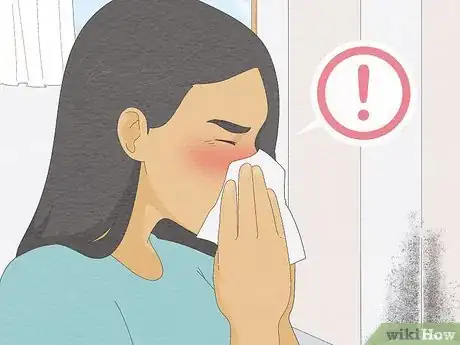
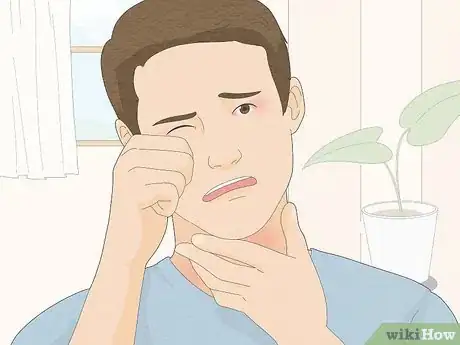
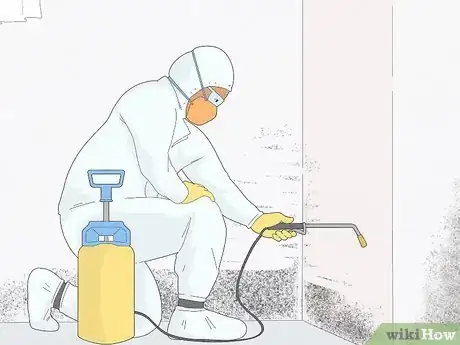
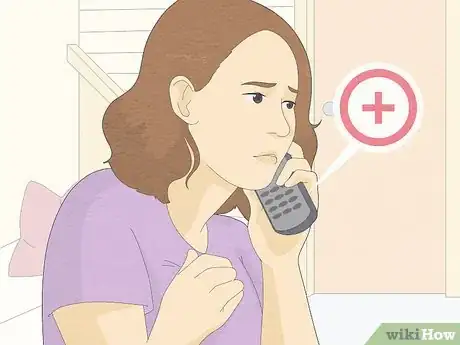
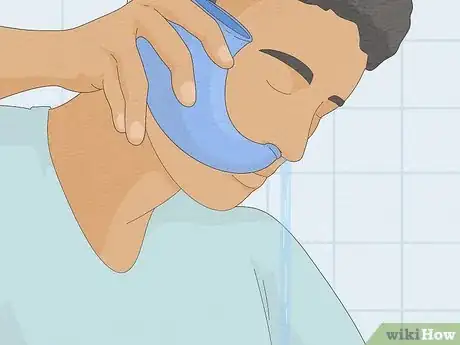



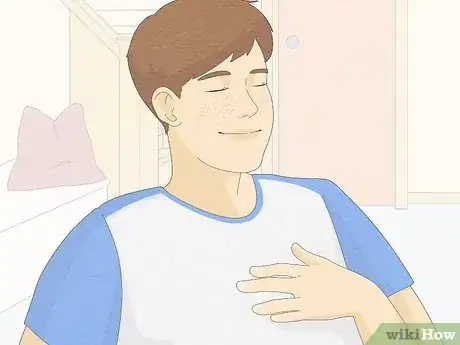



-Step-17-Version-2.webp)
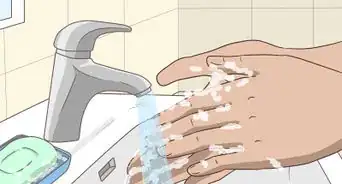


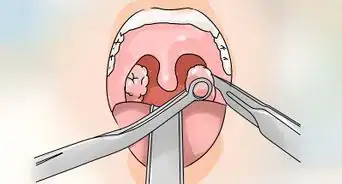


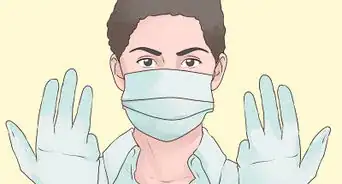

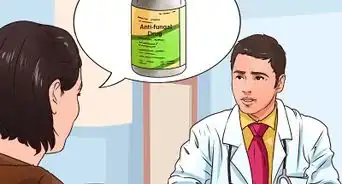
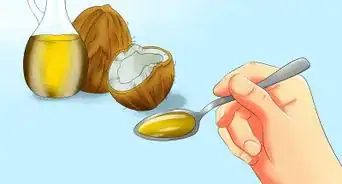










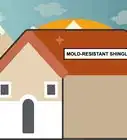


-Step-17-Version-2.webp)



































Medical Disclaimer
The content of this article is not intended to be a substitute for professional medical advice, examination, diagnosis, or treatment. You should always contact your doctor or other qualified healthcare professional before starting, changing, or stopping any kind of health treatment.
Read More...